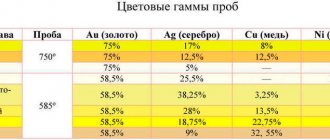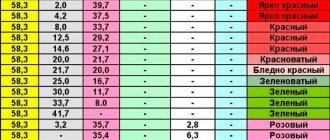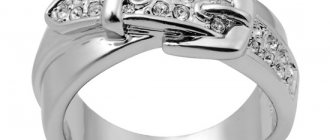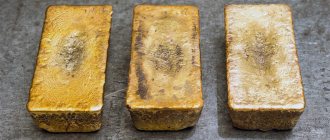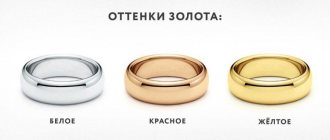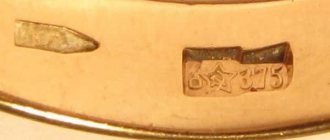30.05.2020
According to the famous financier, Warren Buffett, the value of gold is difficult to explain, since no tangible practical benefit can be derived from it. Why then do the central banks of leading countries store and increase huge reserves of this precious metal, and what makes gold a valuable asset for small and large investors?
The former head of the US Federal Reserve System, Ben Bernanke, explains the high value of gold by established historical traditions. Is it so?
What makes millions of people voluntarily exchange their existing funds for precious metals? After all, it does not bring any monthly dividends, it cannot be eaten or burned in a stove to keep warm. However, it is such a valuable asset that one ounce of it, the size of a lump of sugar we put in our tea, is worth about $1,700 today. So why is the yellow metal so attractive and continues to form the basis of the financial and monetary system of the whole world for thousands of years?
There are five reasonable explanations for the fact that gold is so valuable now, and will be an even more valuable asset in the future, which we will give below.
Physico-chemical explanation of the value of gold
What makes gold a valuable asset is, first of all, its physical and chemical characteristics. It is they who transform this metal into the optimal material for use as money. In ancient times, trade transactions were concluded on the basis of natural exchange. With the development of civilization and the emergence of large cities, the need arose to introduce into use a universal equivalent of the standard value of a product, that is, money.
Anything can be used as a currency. But some items may be too inconvenient, bulky, difficult to store, or simply unsightly to look at. Gold is free from all these disadvantages. Therefore, over time, it became that very valuable asset that turned into money.
Let us compare gold with other metals in terms of physical, chemical and other properties. Here are the main differences that determine its high value:
- The industrial use of gold is minimal compared to silver.
- Gold metal has electrical conductivity comparable to copper, but is much rarer and harder.
- Compared to palladium and platinum, which are used today in fuel catalysts to reduce harmful emissions from cars, gold, on the contrary, is more abundant in nature.
Humanity's choice in favor of gold, as money and the most valuable asset, from a chemical point of view is explained by the fact that, unlike other metals, it cannot be destroyed. It does not rust either in water or in air. Can be preserved as minted coins for thousands of years, and the details of the design will be just as recognizable. This metal burns in fire and melts only at a temperature of 1064 ºC, which is difficult to achieve in everyday life.
Unlike livestock, gold does not need to be fed. It does not require fertilizers and watering, like plants, and maintenance and repair, like complex equipment.
In terms of its metallic properties, gold is valuable due to its high malleability and flexibility. It is difficult to break, stretch or tear. In addition, its value lies in its rarity and beauty. Indeed, the entire volume of yellow metal mined throughout history can easily fit into two swimming pools. And its beauty is evidenced by the huge number of jewelry that bring aesthetic pleasure to their owners.
The above arguments regarding gold as a valuable asset are difficult to classify as traditions or prejudices. They are based on a scientific approach and common sense. Gold metal is also ideal for use as money, as plutonium is for nuclear bombs, steel is for railroad rails, and copper is for wires. No one will run trains on soft copper rails or make conductors for electronic boards from plutonium. Each substance has its own value and finds its unique application according to its properties.
Gold samples
There are several established systems for determining metal samples. The most famous of them are metric and carat.
In Russia, the metric system for determining samples has been used for a long time, as it is very convenient and understandable. This system displays how much pure gold is contained in one kilogram of the alloy. For example, if 1000 grams contains 585 grams of gold and 415 grams of impurities (ligatures), the product will be 585 fine.
Each sample has its own characteristics and it is difficult to say which one is better. To store the precious metal in bullion, 999 purity is used, i.e. gold is stored in almost pure form. While the most common standard for creating jewelry is 585.
As for the karate rating system, it is most popular in Europe and the USA. In this case, 24 parts of the alloy act as the base, and the sample shows how many full parts are gold.
So, if a product has a hallmark of 18K, this means that it consists of three-quarters gold and a quarter alloy. In metric parlance, this is 750 sterling. Jewelry is made from the following alloys: 9 carat, 10, 14, 18 and 24.
958 sample
The composition of this sample includes 95.8% pure gold . It is as close as possible to the characteristics of red gold.
The hallmark corresponds to 23 carats in the karat grading system. 958 standard is extremely rarely used by jewelers to create jewelry. This is due to the prohibitively high cost of products and their susceptibility to various types of damage.
The composition of such an alloy, according to GOST 30649-99, in addition to the noble metal, may include the following components:
- Silver – 1.7-2.3%
- Copper – 1.2-2.4%
- Iron – up to 0.08%
- Lead – up to 0.003%
- Antimony – up to 0.003%
The alloy has a bright yellow color with a characteristic shine. It is used only to create some parts of products that are not subject to continuous physical impact.
958 standard is not sold in the form of bars and is sold only as scrap or jewelry. The cost of the alloy is variable and depends on various factors, such as the place of production, the complexity of the work, the place where the product was purchased, etc.
Alloy 958 has not found wide use despite the fact that it is approved by GOST.
750 sample
This hallmark is very popular among jewelers and corresponds to 18 carats. It contains 75% gold, which is the most optimal ratio. How many grams are in 1 carat of gold can be found here.
A fairly high percentage of gold attracts buyers, and it is easy for craftsmen to work with this composition, since it also contains enough ligature (25%). 18k gold is easy to polish and process.
The color of a gold product of this standard varies depending on what constitutes the remaining 25%.
The most common option is white products, for which palladium and silver are used in a ratio of 20% to 5%. The uniqueness of such products lies in their external similarity to natural platinum, however, their cost is 40% cheaper than platinum jewelry.
585 sample
This test can easily be considered the most popular in jewelry making. Rings, cufflinks, chains, bracelets, buttons, family heirlooms, etc. are made from it. 585-karat items do not fade over time and are very durable.
What is added to 585 gold? The shades of gold of this standard can be very different: white, red, pink, green, etc. It depends on the composition of the impurities. The 585 gold alloy classically contains copper and silver.
585 sample has an interesting origin. It appeared after the collapse of the Soviet Union as a replacement for 583 gold, which was not particularly popular. Being isolated from European countries, the USSR itself set standards and tests. By increasing the gold content by 0.2%, the inventors obtained the famous 585 standard, which meets all the requirements of both consumers and jewelers.
500 and 375 sample
500 standard is extremely difficult to find on jewelry counters today due to a number of disadvantages of such an alloy.
Despite the fact that it is approved for making jewelry, almost no one uses it. This is due to the very low casting properties of this sample. It has found its application as a standard for the inspection of jewelry.
375 gold is also rarely found in jewelry stores. Products made from such an alloy quickly lose their attractiveness and shine, which is why the demand for them is extremely low. 375 standard is used in the manufacture of bracelets, cigarette cases, watches, and household items and interior elements are also inlaid with this alloy.
The external attractiveness of gold for humans
Of all the chemical elements known to people, gold is the most attractive to the human eye. Nothing caresses and captivates the eye like this precious metal. This is another reason why it is so valuable and desirable, not only as an investment asset, but also as a magical, attractive substance. This largely determines the value of gold as money.
These properties, as well as man’s relationship with the yellow metal, remain unchanged for thousands of years! Surely, the Egyptian queen Nefertiti rejoiced in her gold jewelry just like some rich bride today.
The value of gold has developed historically
The statement that gold is a valuable asset is usually argued by financiers who prefer securities to precious metals. They have a mistakenly negative view of gold investing due to only taking the short term into account.
Let's analyze the price dynamics of the United States gold market from the beginning of the decline of the gold standard (1933) until its complete abolition (1971). All this time, the price of gold was steadily rising. A significant incentive for this was the permission of free trade in them.
To understand even better the value of the yellow metal and the stability of its purchasing power, let's look back centuries and millennia.
2000 years ago, during the supposed life of Jesus Christ, a Roman had the opportunity to purchase good-quality sandals, a leather belt and a toga for a gold ounce. Today, the same amount of gold has a value equivalent to a pair of expensive shoes, a formal suit and a leather belt.
Even earlier, in Babylon under King Nebuchadnezzar in the 4th century BC, a golden ounce was exchanged for 350 loaves. Now for 31.1 grams of yellow metal you can also buy at least 350 bread rolls.
If we consider how valuable an asset gold is in relation to real estate, then in the 70s of the last century, with the cost of an ounce of the precious metal being $193, a family home in the United States could be bought for 290 ounces. In 2014, with the cost of an ounce of the yellow metal already $1,266, the same house cost 225 gold ounces. And the remainder of 65 ounces could be spent on buying a car and installing a swimming pool.
It turns out that the value and purchasing power of the gold metal not only did not decrease, but also increased.
Today, paper national currencies have supplanted such a valuable asset as gold in the struggle for the right to be considered real money. Although the value of the banknotes is not backed up by anything other than promises of liquidity from the issuer. Even very recent history provides us with plenty of examples of how unreliable such promises can be. So should you blindly trust them?
The situation with securities is the same.
Government bonds and shares of companies from a century ago are now very likely to have lost their value. We are not saying that you cannot invest in them. It's just that different valuable assets have different purposes and must be viewed from a different time perspective.
The value of gold lies in its ability to save savings over a long period of time, as well as its ability to insure against risks associated with the economic crisis and inflation. It has been historically confirmed that these characteristics of the yellow metal have remained unchanged for thousands of years.
What pitfalls exist?
Pitfalls of investing in gold:
1 The need to pay 18% VAT if you buy physical gold bullion;
Alternative options will allow you to avoid paying VAT: investment coins and compulsory medical insurance - more on them below.
2 The accounting price of gold is established by the Central Bank and is a guideline for a commercial bank when setting its prices. At the same time, the bank’s price differs from the official price of the Central Bank. Usually not in favor of the investor.
For example, as of May 17, the official accounting price of gold at the Central Bank was 2587.5 rubles. In Sberbank on this day you would buy gold at a price of 2,758 rubles. This is 6% more expensive.
3 The price at which the bank will buy gold from you will differ from the selling price. This difference is called the spread.
For example, on the same date at Sberbank the purchase price is 2459, the sale price is 2758. The bank is a commercial enterprise and the spread gives it the opportunity to earn a profit. If on this day Sberbank buys 1 gram from Vasya. gold and sell it to Masha, he will earn 299 rubles. And if it is 100 grams, then – 29,900 rubles.
For an investor, this difference can cause a loss in the short term.
For example, Anton bought 10 grams at Sberbank. gold on January 9 and sold it on May 17. The result of the transaction is shown in the table.
| Index | Purchase | Sale |
| Price per gram in Sberbank as of January 9, 2018, rub. | 2296 | 2525 |
| Price per gram in Sberbank as of May 10, 2018, rub. | 2459 | 2758 |
| Purchase expenses, rub. | — | 25250 |
| Income from sales, rub. | 24590 | — |
| Transaction result, rub. | — 660 | |
Although prices have increased over 5 months: purchases by 7%, sales by 9%. Anton lost 660 rubles. due to the fact that the bank buys gold cheaper than it sells.
4 You will have to pay 13% personal income tax on income if the gold is owned for less than 3 years.
For example, when purchasing 1 gr. gold and selling it in a year, the income from the price difference will be 81 rubles. On this income you need to pay a tax of 13%, that is, 10.53 rubles.
Important: you pay the tax yourself. This involves filing a tax return.
5 Purchased bullion must be stored somewhere. The storage location must be safe. For example, in a safe deposit box. You will have to pay to rent a cell. The annual cost of renting the smallest cell in Sberbank (up to 9 cm in height) will cost the investor 6,137 rubles. Naturally, this rule is not necessary. You can store bullion anywhere, even in a chest buried two meters deep in the backyard of your dacha.
Rules for storing gold bars
If you bought a small amount of gold bars, you can store them at home by getting a small safe. In this case, it is better to keep them in protective capsules and not touch the surface of the gold with bare hands. All certification and cash papers must also be saved. Otherwise, the most profitable sale will not be possible.
After you buy bullion from a bank, you will probably be offered to enter into an agreement to store them there. If you agree, you will not be given the gold in your hands, but will be left in a bank vault. Such a service requires additional costs, and whether to use it or not is everyone’s personal choice.
Absence of dependence on circumstances and actions of a third party
Physical gold is the only valuable asset that is not someone else's liability or promise. It does not depend on bank, government or brokerage support. Its value cannot be harmed by default, monetary inflation or political instability.
If you own yellow metal, you do not feel dependent on someone who can refuse their obligations. There is no so-called counterparty risk in this case.
Any manipulations and transactions with assets in the form of securities, investments in exchange-traded funds, shares, etc. always provided by some third party. Having gold coins in your pocket or bullion in your home safe makes you independent from anyone.
Financial benefits
As a valuable asset, gold has the following advantages:
- it does not disappear over time, the entire extracted volume continues to be used;
- not subject to corrosion and rust, no expiration date;
- does not depend on the counterparty fulfilling its obligations.
The value of gold as money is determined by its liquidity, ability to quickly convert into cash, high concentration of value in a small volume, independence of price from division into parts, durability, uniformity and confidentiality.
The yellow metal cannot be printed like banknotes, counterfeited, devalued, or produced in any quantity required by the Central Bank. It is the most valuable asset precisely because it has distinctive superior characteristics in comparison with other financial instruments.
The emergence of paper money and the “gold standard”
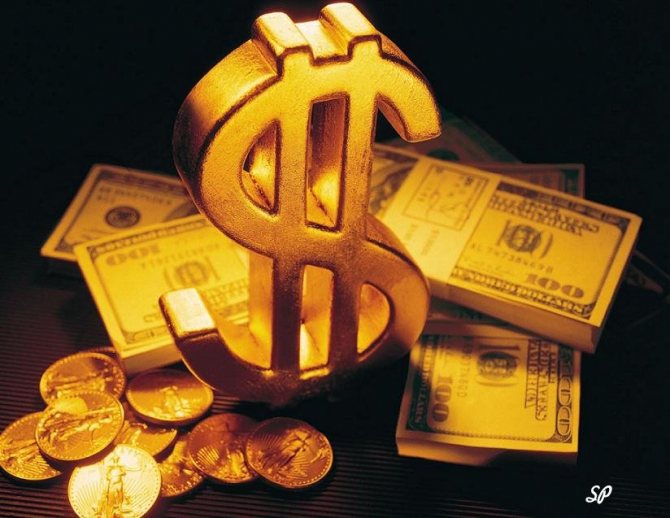
Gold, over time, occupied an increasingly strong position in international financial relations, but for the sake of fairness, it should be noted that silver and copper were also important in the world economy until the mid-nineteenth century, although they were valued much less than gold.
When the first paper money appeared in Europe in the eighteenth century, the essence of financial relationships did not change, just as any banknote was backed by gold, the amount of which was strictly maintained depending on the denomination of the bill. It's hard to believe, but in those days this was actually exactly the case. Money, without the slightest difficulty and at any time, could be exchanged for the appropriate amount of gold, which, as at all times, was trusted more than other means of payment.
Already by the nineteenth century, gold was finally established as a single monetary commodity and silver lost its importance in the international financial system. For the sake of accuracy, it should be noted that silver was previously used for minting small coins. After this, for a long time, until the beginning of the twentieth century, the currency of any state in the world was based on the so-called “gold standard,” which implied that any monetary unit must be backed by an appropriate amount of gold.
